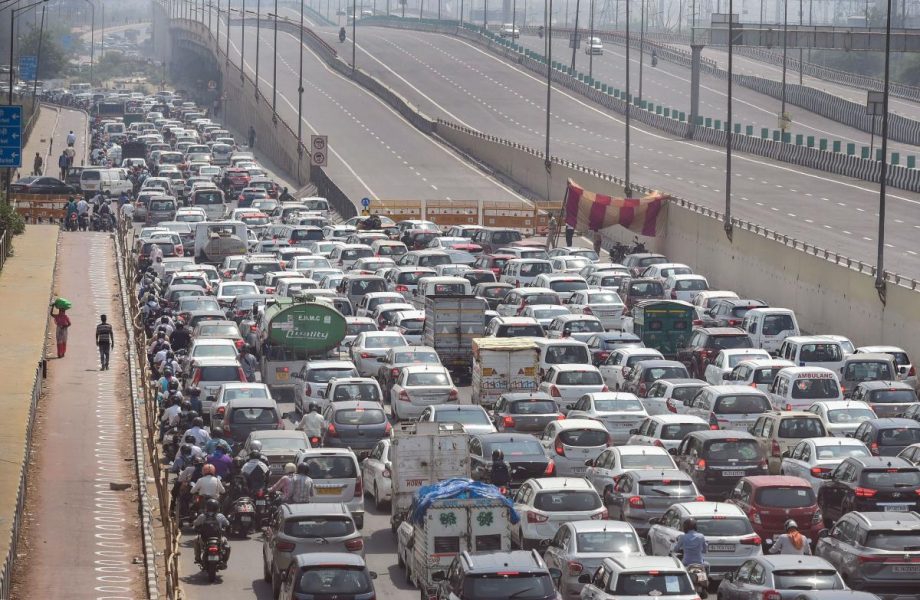
Vehicle scrappage policy in its current form will be a non-starter
The vehicle scrappage policy announced by the finance minister was long overdue, but it completely falls short of what it is intended to do

On August 13, Prime Minister Narendra Modi launched the Vehicle Scrappage Policy that seeks to phase out unfit vehicles to reduce vehicular pollution. The scrappage policy, a government-funded programme to remove old vehicles from roads, is expected to reduce pollution, create job opportunities and boost demand for new vehicles.
Here we reproduce an article published last February after the finance minister announced the scrappage policy.
The vehicle scrappage policy announced by the finance minister was long overdue, but it completely falls short of what it is intended to do.
Presenting the Union Budget 2021-22, Nirmala Sitharaman on Monday announced a voluntary vehicle scrapping policy to phase out old and unfit vehicles under which personal vehicles will undergo a fitness test in automated centres after 20 years; commercial vehicles will undergo the test after 15 years. The details of the policy will be unveiled within 15 days.
The proposal was received with much enthusiasm by Sitharaman’s ministerial colleague, Nitin Gadkari, the Union minister for road transport, highways, and MSMEs, who said that the move will reduce pollution and benefit the automobile sector.
The policy is expected to boost the demand for heavy and medium commercial vehicles, he said. The minister said the material recycled will be useful for the automobile industry as it will reduce the cost of manufacturing cars, buses and trucks, increasing India’s competitiveness in international markets.
“We will take scrap from all over the world and here we will make an industry where we can use all new material and the cost will be less, and the industry will become more competitive. Then, we will get more export orders and the import will reduce,” Gadkari said.
“In the coming years, India will be one of the manufacturing hubs of cars, buses and trucks, with all fuel, ethanol, methanol, bio-CNG, LNG, electric as well as hydrogen fuel cells,” the minister added.
Hopefully, these statements will be backed with some real hard-on-the-ground implementation. However, the government seems to have missed a huge opportunity to push home tougher measures given the state of the economy.
The policy as of now is voluntary and hence the onus is on the vehicle owner to subject his vehicle to scrappage. In a statement, Mitul Shah, head of research, Reliance Securities, pointed out that the policy will have minimal benefit to the auto industry as the proposed scheme is voluntary, not mandatory.
The government will hopefully come out with a clause whereby if a vehicle fails the fitness test more than thrice, it might be subjected to mandatory scrapping. As per reports, 51 lakh vehicles in India are currently over 20 years old and 34 lakh are over 15 years old. Once scrapped, it is expected that the vehicular pollution will be reduced by up to 25 per cent. Given the current state of the economy, the government could have actually lowered the age of private vehicles to 12-15 years depending upon their pollution levels while retaining the age for commercial vehicles to 15 years. Next, the government should come out with definite incentives in terms of benefits for the vehicle owners to opt for this policy. Else, the intention of the policy will remain on paper.
As part of the benefits, the government will have to take into confidence the individual states as well, without whose support the policy may not stand on its own. There are other measures that need to be dovetailed along with the implementation of the policy. To make India a hub for recycling, infrastructure at the ports will need an overhaul and perhaps a deeper draft to support heavy vessels.
The government should also take into consideration the rising diesel prices and a higher incentive for those vehicles which ply in rural areas as well like easier payment options, credit facilities and subsidies.
Benefits
For the government, the scrappage policy is expected to boost tax revenues collected from the automobile sector up to Rs 10,000 crore. It is also expected to reduce oil consumption by 3.2 billion litres per year, which will help save nearly Rs 7,000 crore in oil import.
For the automobile industry, the backbone of a country’s economy, the scrappage policy will help it grow to around Rs 20 lakh crore. For the steel industry, the benefit will be huge and probably revive the sector as well.
Some of the analysts do believe that it has come at the right time as SIAM forecast says vehicle sales across categories will decline 25 per cent – 45 per cent this fiscal. Passenger vehicle sales fell 16 per cent year on year from April to December to 17,77,874 units with car sales falling 20.3 per cent. Sale of commercial vehicles too fell 37 per cent year on year to 3,58,203 during the same period.
According to Tarun Mehta, co-founder of Ather Energy, which makes electric vehicles, the policy will encourage sales of new vehicles. Rajeev Singh, partner, automotive leader, Deloitte India, pointed out that the policy, though voluntary, will likely become mandatory as fitness certificates are made mandatory. “Given the dearth of proper infrastructure, just the introduction of a fitness certificate may not be enough. The government will also need to build the necessary infrastructure to get this to action on the ground. A strong push in infrastructure building – roads, railways, economic corridors – will help boost demand for heavy and medium duty CVs.”
Therefore, the government will have to work hard to get the policy off the ground and not leave it at implementing the scrappage policy in isolation.

